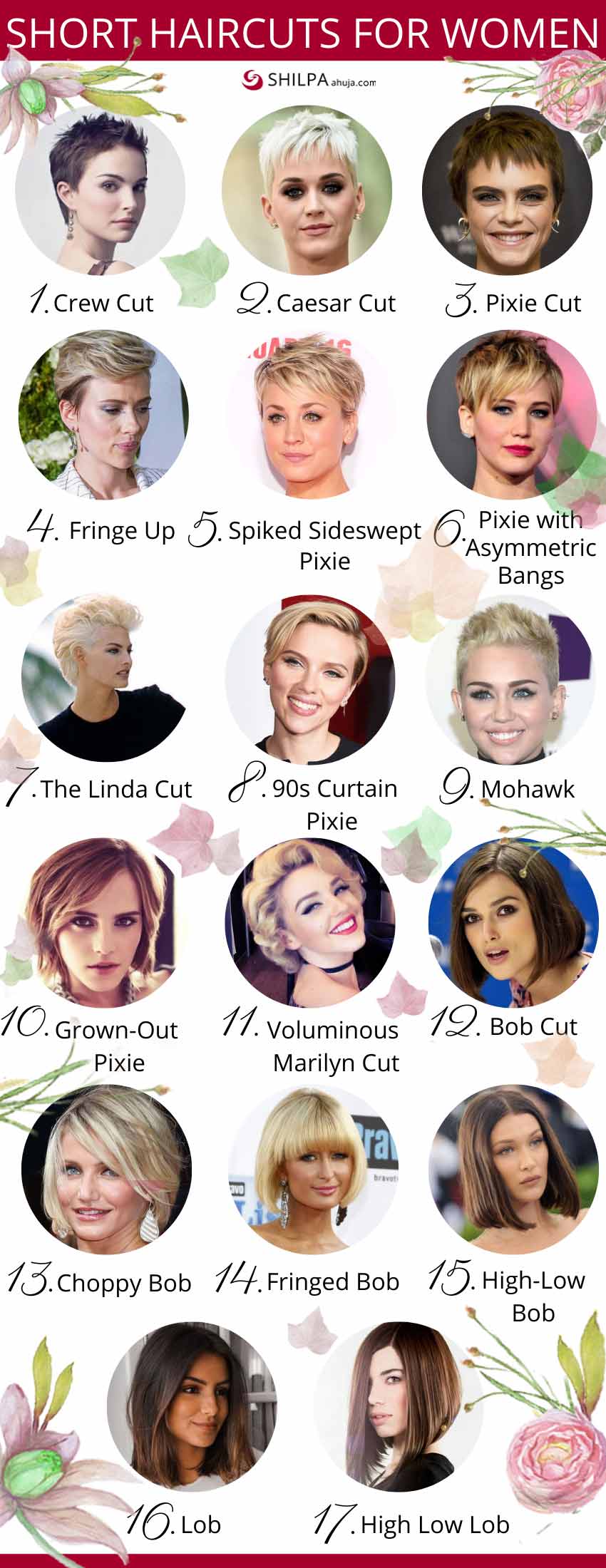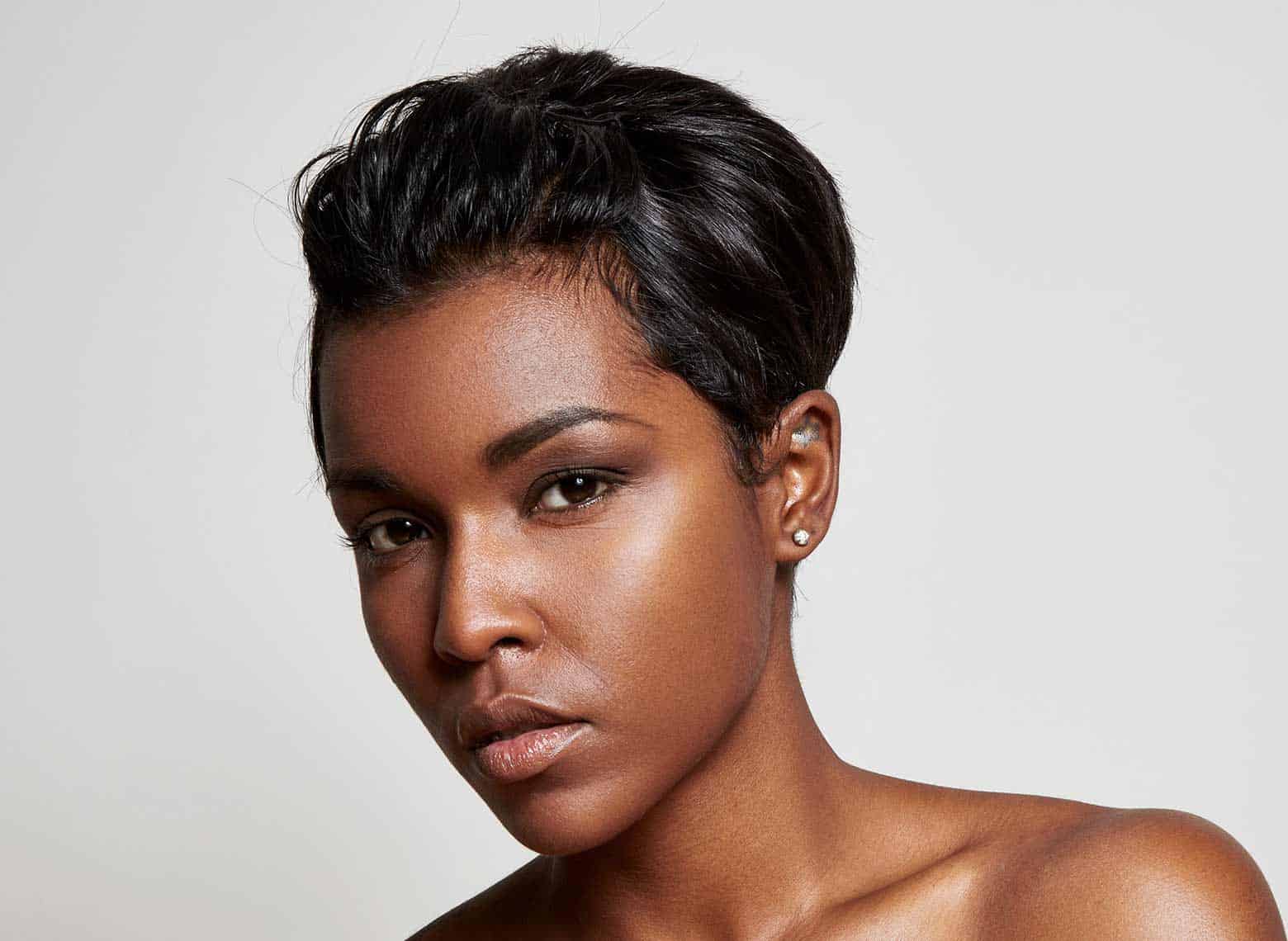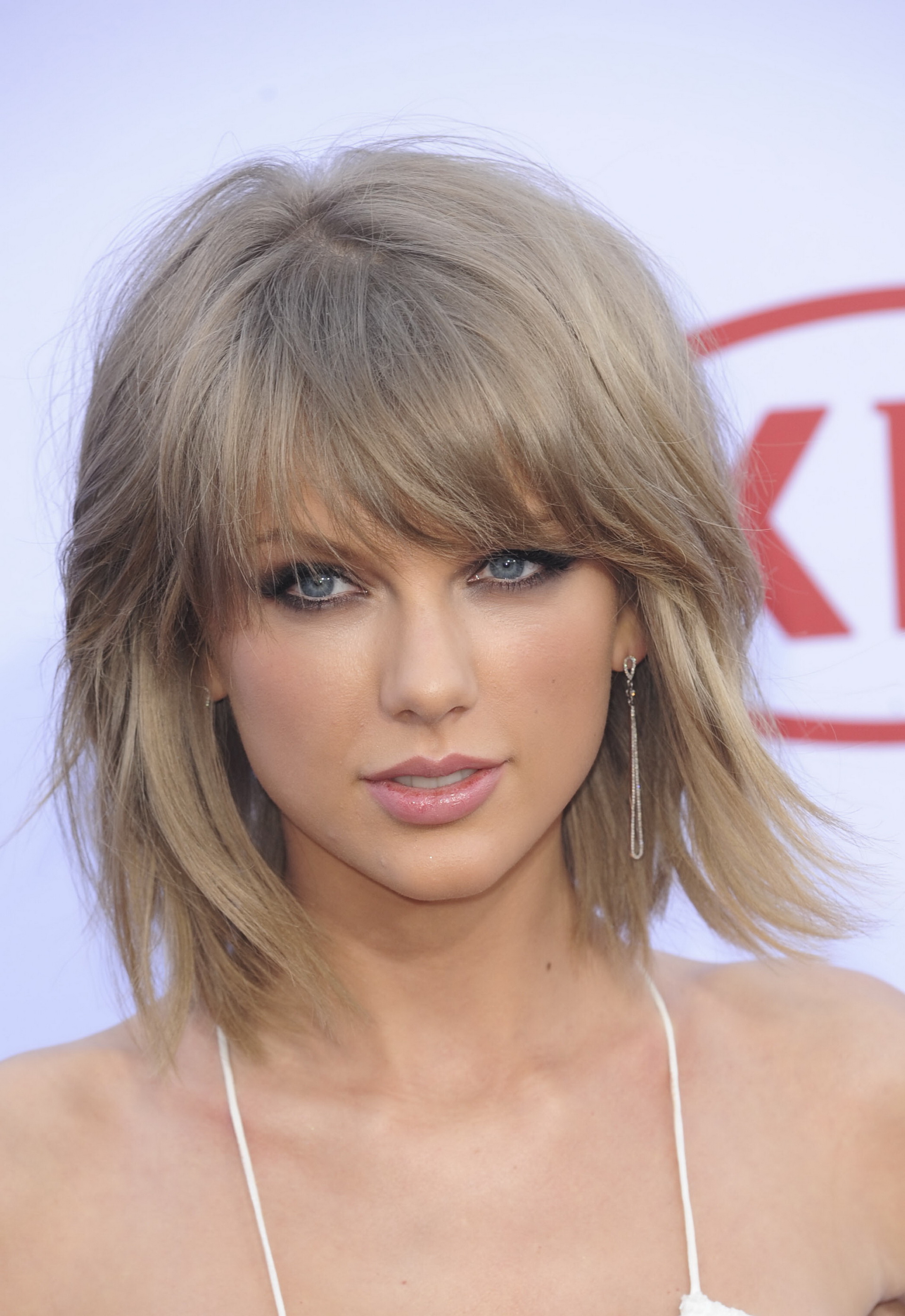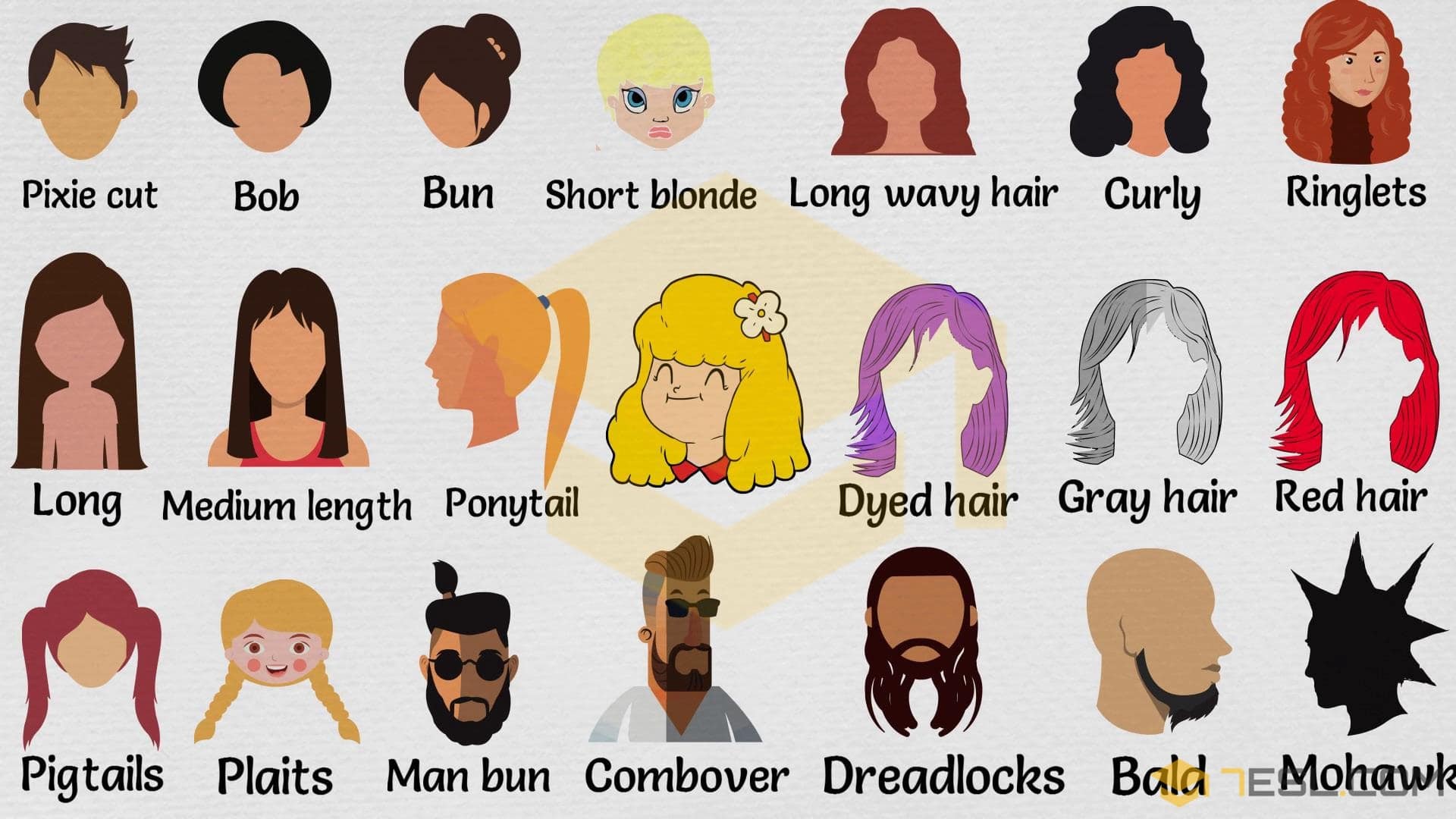Type of Hairstyles for Ladies: A Comprehensive Guide

The realm of personal aesthetics is profoundly influenced by the arrangement and presentation of hair. For centuries, hair has served not merely as a biological feature but as a canvas for self-expression, a marker of identity, and a reflection of prevailing cultural and societal trends. The careful selection and meticulous styling of hair can significantly alter an individual’s appearance, conveying messages ranging from professional competence to artistic flair, from understated elegance to bold individuality. This exploration delves into the diverse categories of hair arrangements available, examining their characteristics, suitability, and the impact they exert on overall presentation. Understanding the spectrum of options empowers individuals to make informed choices that align with personal preferences, lifestyle requirements, and desired aesthetic outcomes.
The Spectrum of Hair Lengths and Their Styling Potential
Hair length fundamentally dictates the range of styling possibilities. Each length category offers distinct advantages and presents unique challenges, influencing both maintenance routines and the ultimate visual impact.
Short Hair Arrangements:
Short hair, often associated with boldness and modernity, encompasses a variety of cuts that typically extend no further than the chin. These styles are celebrated for their low-maintenance appeal and their ability to highlight facial features.
- The Pixie Cut: Characterized by short back and sides, often with a slightly longer top, the pixie is a statement of confidence. Its variations include textured, asymmetrical, or layered versions, allowing for adaptability to different face shapes and hair textures. The style emphasizes the eyes and cheekbones, offering a chic and often youthful appearance.
- The Bob: A timeless classic, the bob cut generally falls between the ears and the shoulders. Its versatility is evident in numerous iterations: the classic blunt bob, the inverted bob (shorter at the back, longer at the front), the A-line bob, and the lob (long bob). Bobs can be styled sleek and straight for a sophisticated look, or wavy and textured for a more relaxed, contemporary feel. They provide a balance between manageability and styling options, framing the face elegantly.
- The Shag: A layered cut with choppy ends, the shag provides volume and movement. It often features bangs and can be adapted to various lengths, though it is particularly striking in shorter forms. This style exudes a rock-and-roll vibe, offering a relaxed yet edgy aesthetic.
Short hair arrangements are often chosen for their liberating feel and the ease with which they can be managed daily. They project an image of self-assuredness and contemporary style, making a strong visual impact.
Medium Hair Arrangements:
Medium-length hair, typically falling between the chin and the collarbone, offers perhaps the greatest versatility. This length provides enough substance for elaborate styling while remaining relatively easy to manage compared to very long hair.
- Layered Cuts: Adding layers to medium-length hair creates volume, texture, and movement. Layers can be long and subtle for a softer look, or shorter and more dramatic for increased bounce and definition. This approach prevents the hair from appearing heavy or flat, enhancing its natural flow.
- Shoulder-Length Bobs and Lobs: These extended versions of the classic bob maintain its sophisticated structure while offering more length for updos, half-up styles, and intricate braiding. The lob, in particular, has gained immense popularity for its chic appeal and adaptability to various hair types and face shapes.
- Wavy and Curly Styles: Medium hair is ideal for enhancing natural waves or curls, or for creating them artificially. The length allows curls to form without becoming overly voluminous or weighed down, resulting in a balanced and appealing texture.
- Half-Up Styles: This length is perfectly suited for half-up arrangements, where the top section of hair is pulled back, leaving the rest flowing. These styles offer a blend of casual elegance and practicality, keeping hair away from the face while showcasing its length and texture.
Medium hair arrangements strike an optimal balance, providing ample opportunity for diverse styling without the extensive time commitment sometimes associated with very long hair. They are a popular choice for individuals seeking flexibility and a polished appearance.
Long Hair Arrangements:
Long hair, extending beyond the collarbone, is synonymous with classic beauty and offers the broadest spectrum of styling possibilities, from simple flowing locks to intricate updos and braids.
- Straight and Sleek: Long, straight hair, often achieved through straightening treatments or heat styling, conveys a sense of sophistication and polish. Its smooth texture reflects light beautifully, creating a lustrous finish.
- Wavy and Curly: Natural waves and curls, or those created with styling tools, add volume, romance, and a bohemian flair to long hair. The length allows for pronounced curl patterns and cascading waves, offering a soft and alluring aesthetic.
- Layered Long Hair: Layers are crucial for long hair to prevent it from appearing heavy or shapeless. They add movement, reduce bulk, and enhance the hair’s natural texture, making it more manageable and dynamic.
- Braids: Long hair is the ultimate canvas for braiding. Options include the classic three-strand braid, French braids, Dutch braids, fishtail braids, waterfall braids, and elaborate braided updos. Braids are not only decorative but can also serve as protective styles, minimizing manipulation and damage.
- Ponytails and Buns: These foundational styles are elevated by the length of the hair. High ponytails convey energy and youthfulness, while low ponytails offer understated elegance. Buns, from sleek chignons to messy top knots, provide versatile options for both casual and formal occasions.
Long hair arrangements offer unparalleled versatility, allowing for continuous reinvention and adaptation to various events and personal moods. They symbolize classic femininity and provide a rich foundation for creative expression.
Specialized Styling Categories
Beyond length, certain categories of hair arrangements are defined by their technique, purpose, or aesthetic origin.
Updos and Formal Styles:
Updos involve arranging the hair upwards and away from the neck, typically secured with pins, ties, or clips. These styles are frequently chosen for formal events due to their elegant and polished appearance.
- Chignons: A classic chignon involves gathering the hair into a knot or coil at the nape of the neck or slightly higher. It exudes timeless sophistication and is a staple for weddings and black-tie events.
- French Twists: This elegant style involves twisting the hair upwards from the nape of the neck and securing it vertically. It offers a sleek and refined profile, suitable for professional settings and formal gatherings.
- Braided Updos: Combining the artistry of braiding with the elegance of an updo, these styles can range from simple braided buns to intricate woven patterns that encircle the head. They offer a romantic and intricate aesthetic.
- Messy Buns and Top Knots: While often associated with casual wear, these styles can be elevated for Short Layered Hairstyles With Volume An In Depth Exploration Of Dynamic Dimension semi-formal occasions with strategic placement, added texture, and decorative accessories. They offer a relaxed yet chic alternative to more rigid updos.
Updos are instrumental in creating a refined and sophisticated image, keeping hair neatly contained while showcasing facial features and necklines.
Braided Hair Arrangements:
Braids are not only a styling choice but often a protective measure and a significant cultural expression. Their versatility allows for countless patterns and applications.
- Box Braids: Individual braids created by dividing the hair into square or “box” sections. These are popular protective styles, often enhanced with extensions for added length and volume.
- Cornrows: Braids that lie flat against the scalp, created by braiding hair underhand or overhand in rows. Cornrows can form intricate geometric patterns and are a foundational element of many traditional and modern styles.
- French and Dutch Braids: These classic braiding techniques involve incorporating sections of hair as the braid progresses, creating a seamless, integrated look. French braids weave hair over, while Dutch braids weave hair under, resulting in a raised, more prominent braid.
- Fishtail Braids: A distinctive braid created by dividing hair into two sections and taking small strands from the outer edge of one section and crossing them over to the other. This creates a delicate, intricate pattern resembling a fish skeleton.
- Micro Braids: Very thin, small braids that can be worn for extended periods, offering a fine texture and versatile styling options.
Braided hair arrangements are celebrated for their aesthetic appeal, their ability to protect natural hair from environmental damage and manipulation, and their deep cultural significance in many communities.
Textured and Natural Hair Arrangements:
Embracing and styling natural hair textures, particularly curls, coils, and kinks, has become a powerful movement celebrating authenticity and cultural identity.
- Afros: A style that allows naturally curly or coily hair to grow out from the head in a large, rounded shape. The afro is a symbol of natural beauty and empowerment.
- Twists: Created by dividing hair into sections and twisting two strands around each other. Twists can be worn as a style themselves or used as a foundation for twist-outs, where the twists are unraveled to reveal defined curls.
- Locs (Dreadlocks): A permanent hair arrangement formed by matting or braiding hair into rope-like strands. Locs are a deeply significant cultural and spiritual style for many, requiring specific maintenance to keep them healthy and neat.
- Wash-and-Go: A simple yet effective method of styling natural hair by washing, conditioning, and applying products to define curls or coils, then allowing them to air dry or diffuse. This method celebrates the hair’s inherent texture.
- Bantu Knots: Small, coiled buns secured against the scalp. They can be worn as a style or used to create defined curls when unraveled.
These arrangements highlight the beauty and versatility of natural hair, promoting healthy hair practices and fostering a sense of pride in one’s inherent texture.
Vintage and Retro Hair Arrangements:
Drawing inspiration from past decades, vintage styles offer a unique charm and distinctive aesthetic.
- Finger Waves: A classic 1920s and 30s style involving creating S-shaped waves flat against the head using fingers and a comb. It exudes sophisticated glamour.
- Victory Rolls: Popular in the 1940s, these involve rolling sections of hair upwards and inwards, typically at the front of the head, creating voluminous, symmetrical rolls. They evoke a sense of wartime resilience and glamour.
- Beehives: A towering, voluminous style from the 1960s, achieved by backcombing hair at the crown and shaping it into a high, rounded dome. It is a bold and iconic statement.
- Pin-Up Curls: Soft, bouncy curls often associated with 1950s pin-up models, characterized by defined, often rolled, curls that frame the face.
Vintage hair arrangements offer a distinct way to express personality and appreciation for historical fashion, adding a unique flair to any look.
The extensive array of hair arrangements available underscores the profound role hair plays in personal presentation and identity. Each style, whether chosen for its practicality, aesthetic appeal, or cultural significance, contributes to an individual’s overall image, reflecting personal taste, lifestyle, and self-perception. The ability to adapt and transform hair allows for continuous self-expression, making it an enduring and dynamic aspect of personal style.
FAQs by type of hairstyles for ladies
Q: How does face shape influence hair arrangement selection?
A: Face shape significantly impacts the suitability of a hair arrangement. Oval faces are considered universally adaptable. Round faces benefit from styles that add height at the crown or length below the chin to elongate the appearance. Square faces are softened by layers, waves, or curls around the jawline. Heart-shaped faces are complemented by volume around the chin or wispy bangs. Long faces are balanced by styles that add width, such as bobs or layers that frame the face.
Q: What are the primary considerations for maintaining protective hair arrangements?
A: Maintaining protective hair arrangements involves several key steps: regular cleansing of the scalp to prevent buildup, moisturizing the hair and scalp to prevent dryness, avoiding excessive tension to prevent breakage, and ensuring the style is not kept for an overly extended period. Regular breaks between protective styles are also recommended to allow the natural hair to rest and breathe.
Q: Can hair Vintage Hairstyles Half Up Half Down A Timeless Elegance Reimagined texture limit styling options? A: Hair texture does not limit styling options but rather dictates which arrangements will be most effective and healthy for the hair. Fine hair may struggle to hold certain voluminous styles without assistance, while thick hair may require specific layering to reduce bulk. Curly or coily hair thrives in arrangements that enhance its natural pattern, though it can also be straightened. Understanding hair texture allows for the selection of styles that work harmoniously with its natural properties.
Q: What are common misconceptions about short hair arrangements?
A: Common misconceptions about short hair arrangements include the belief that they are masculine, offer limited styling versatility, or are only suitable for certain age groups. In reality, short hair can be incredibly feminine, modern, and versatile, allowing for numerous styling variations with different partings, textures, and accessories. They are suitable for individuals of all ages and can enhance a wide range of facial features.
Tips by type of hairstyles for ladies
Tip 1: Prioritize Hair Health: Regardless of the chosen hair arrangement, maintaining the health of the hair is paramount. Regular deep conditioning treatments, minimal heat styling, and a balanced diet contribute significantly to hair strength and luster, which are foundational for any successful style.
Tip 2: Consult a Professional Stylist: For significant changes or when uncertainty arises regarding suitability, consulting a professional stylist is highly recommended. Stylists possess expertise in face shape analysis, hair texture assessment, and current trends, offering personalized recommendations that align with individual characteristics and preferences.
Tip 3: Invest in Quality Products: The selection of hair care and styling products should correspond to the specific hair type and the desired arrangement. Using shampoos, conditioners, and styling aids formulated for volume, moisture, curl definition, or heat protection can significantly enhance the longevity and appearance of any style.
Tip 4: Embrace Versatility with Accessories: Hair accessories such as headbands, scarves, clips, and decorative pins can transform a simple arrangement into a sophisticated or playful look. These elements offer an accessible way to refresh a style or adapt it for different occasions without requiring a complete restyling effort.
Tip 5: Practice Patience with New Styles: Mastering a new hair arrangement often requires practice. Initial attempts may not yield perfect results, but consistent effort and experimentation with techniques and products will lead to improved proficiency and confidence in executing the desired look.
Conclusion by type of hairstyles for ladies
The exploration of hair arrangements reveals a dynamic and expansive field of personal expression. From the bold simplicity of short cuts to the intricate elegance of updos and the rich cultural tapestry of braided and natural styles, each category offers unique avenues for individuals to project their identity. The selection of a hair arrangement is a deeply personal decision, influenced by aesthetic preferences, lifestyle demands, and the desire to convey a particular image. Understanding the vast possibilities and the principles guiding their application empowers individuals to make informed choices, ensuring that their hair not only complements their features but also resonates with their inner self, thereby enhancing confidence and overall well-being. The evolving nature of hair fashion ensures a continuous cycle of innovation and rediscovery, maintaining its status as a pivotal element of individual style.







More suggestion: African American Hair Types And Textures A Comprehensive Exploration